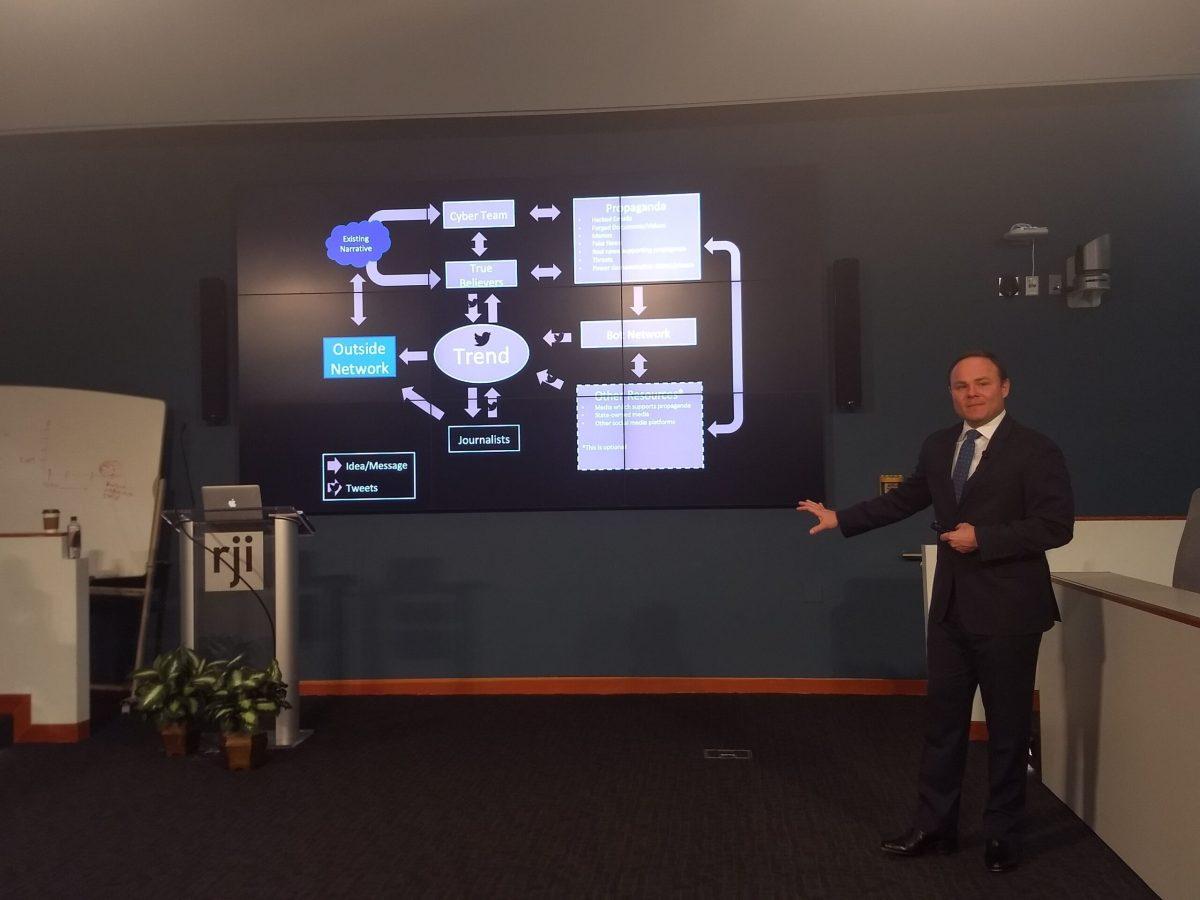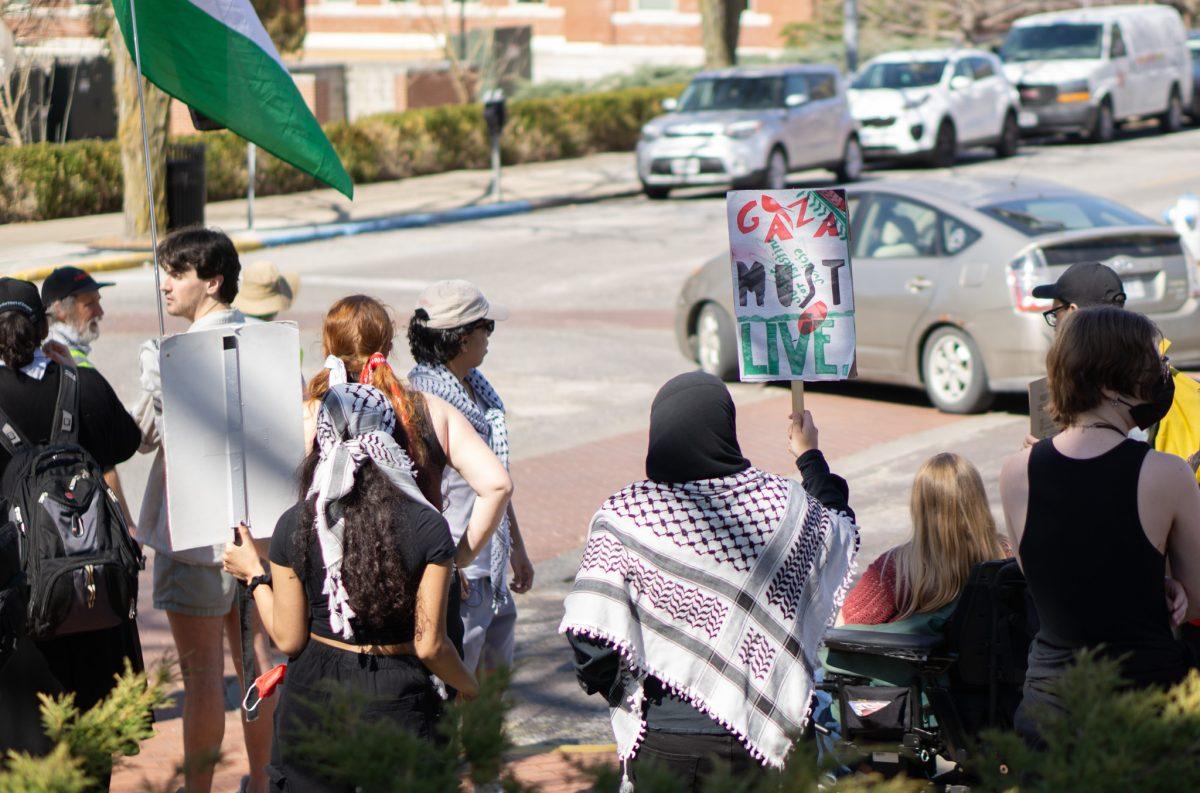The hashtag #PrayForMizzou began trending on Nov. 15, 2015. Shortly after, fake information filled the hashtag, causing chaos and fear among MU students. Military analyst and MU alumnus Jarred Prier later discovered that Russian bots spread this misinformation.
The MU School of Journalism hosted Prier to talk about how social media platforms can be used as cyber warfare on Friday, Feb. 8.
Prier specifically discussed the study he conducted for his master’s degree thesis, during which he discovered a Russian cyber war team that targeted the protests at MU in 2015. Prier also said that information warfare is a national security issue.
“Social media is an effective tool for spreading misinformation,” Prier said. “This requires an understanding of sociology, biology, the way the human mind works, how networks work, political science, warfare and journalism.”
Prier analyzed how society’s relationship with the internet has evolved.
“When I went to Mizzou in the early 2000s, we couldn’t really interact with the internet,” he said. “In the mid to late 2000s, that changed. Around 2005, we could start interacting with the internet. Blogs became popular, social media became popular, so now anybody with an opinion could put something online. Anyone with a camera on their phone could put something online. Anyone can now be a journalist.”
Internet trolls use trends to spread their message, Prier said. They can add their message to every trend, hijack trends and create trends of their own.
Using this tool, Russian trolls created trends to target multiple groups and create chaos, Prier stated in his thesis “The Command of the Trend: Social Media as a Weapon in the Information Age.”
For example, the Russian trolls used the hashtag #PrayForMizzou to spread false information that the Ku Klux Klan was marching through MU’s campus, Prier said. He was able to determine that this information was being spread by bots.
He also found that bots hijacked existing hashtags to spread false news. For example, Prier said ISIS hijacked the hashtag #WorldCup2014 to spread their photos, causing panic among people afraid of ISIS.
“Like in previous disinformation campaigns on Twitter, the Russians trolls were able to spread the information because of an underlying fear and an existing narrative that they were able to exploit,” Prier wrote in his thesis. “The trolls used trend hijacking techniques in concurrence with reporting by Russian state-funded television Russia Today (RT) network.”
Junior Caroline Victor believes that it is especially important for journalists to verify their information sources.
“Journalists are the ones who are getting the message from point A to point B,” Victor said. “The event happens, and on the other side, you have a mass of individuals waiting for the news. The journalist is the bridge between that gap. A lot of people would consider journalists a legitimate source, so that makes it even more important for them [to verify information].”
_Edited by Emily Wolf | [email protected]_













